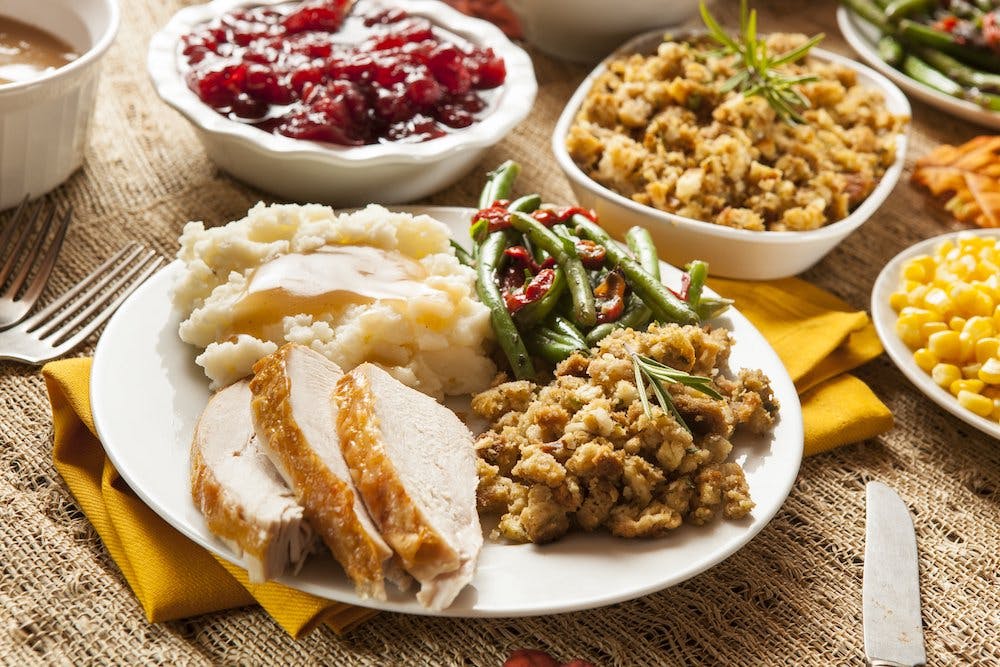
2024-10-09T14:26:27
The Benefits of Seeing a Certified Diabetes Care and Education Specialist
- Endocrinology
- Family Medicine
November 7, 2016 | Family Medicine
Specialties:Family Medicine

When you think of Thanksgiving, you probably think of family and lots of food — not ER visits. If you are not careful, food poisoning can wreak havoc on your holiday and that days that follow. According to the CDC one in six Americans will get food poisoning annually. While there are no studies to support the claim, many doctors report that there is a sharp increase in hospital visits in the days following Thanksgiving.
Following a few simple best practices can help you and your guests from contracting food poisoning and spoiling your holiday.
Keeping your kitchen as clean and sterile as possible can have a big impact on the health of your guests. Make washing your hands, countertops and utensils a top priority. Keep raw meat, their juices and the utensils used to prepare them away from other foods–especially those that do not need to be cooked. Never use utensils that have not been properly cleaned.
After handling meat, wash your hands, counter and any tools that touched the meat with hot and soapy water. The Mayo Clinic notes that one of the most common causes of food poisoning is cross-contamination. Keeping a clean kitchen will dramatically reduce your risk.
There is one Thanksgiving item that should not be cleaned: the turkey. Many people think that rinsing the turkey will help remove bacteria when it actually is spreading germs throughout your kitchen, increasing your risk of cross contamination.
“When you wash the poultry, you have to think of where that bacteria is going. The water splashes on the counter and goes into the sink and gets into the crevices around the drain. You’re actually setting up colonies of pathogens.” says Lydia Medeiros, an assistant professor of nutrition at Ohio State University.
Many groups agree with Medeiros, including the FDA. While it may be a change, cooking a turkey directly after removing it from its packaging without cleaning it is much safer for you and your guests.
Knowing what temperature your food should be kept at is one easy way to prevent food poisoning, but it may require some research in advance. Bacteria multiply quickly in foods that are between the temperatures of 40° F and 140° F. Some common Thanksgiving food temperatures to keep in mind include:
All parts of the turkey must reach 165° F to be fully cooked.
When making (or reheating) gravy, soup, or other sauce it should be brought to a rolling boil. It is not necessary to take the temperature.
79 percent of Americans say that having leftovers is the best part of hosting Thanksgiving. Even after all of the food has been cooked, bacteria still poses a threat.
One of the easiest places to make a food safety mistake is in the thawing of your turkey. 88 percent of Americans say that they eat turkey at Thanksgiving, and improper thawing is one of the easiest ways to get your guests sick. How long you thaw your turkey for varies based on the size of the bird, if it is frozen or not and how you plan to thaw it. Frozen turkeys are good indefinitely, but the USDA recommends eating them within one year of putting them in the freezer for them best quality.
The United States Department of Agriculture has created the following guidelines on how long to thaw your frozen turkey.
If thawing in a refrigerator (allow approximately 24 hours for every 4 to 5 pounds)
|
4 to 12 pounds |
1 to 3 days |
|
12 to 16 pounds |
3 to 4 days |
|
16 to 20 pounds |
4 to 5 days |
|
20 to 24 pounds |
5 to 6 days |
If you choose this method, then you will place the turkey breast up on a tray or other container in your refrigerator. It is important to put a tray or something similar under your turkey to catch any juices that may leak out.
If thawing in cold water (allow 30 minutes per pound)
|
4 to 12 pounds |
2 to 6 hours |
|
12 to 16 pounds |
6 to 8 hours |
|
16 to 20 pounds |
8 to 10 hours |
|
20 to 24 pounds |
10 to 12 hours |
If you choose this method, you will thaw your turkey with the breast down, in its wrapper with enough cold water to cover the turkey completely. You will need to change the water every 30 minutes to keep the turkey chilled.
If you have a frozen stuffed turkey you should not thaw it. Stuffing introduces additional bacteria and thawing the turkey gives potentially dangerous organisms the opportunity to thrive. If you have a thawed stuffed turkey, the USDA recommends discarding it immediately.
If you do have a stuffed turkey, be sure to consult that cooking instructions printed on the packages. It is also very important to only buy “safe” pre-stuffed turkeys that are processed under approved, controlled situations. You can tell the turkey is safe if the packaging displays the USDA or State mark of inspection.
No matter what you plan to eat this Thanksgiving, food safety is important to remember. Every year 128,000 people are hospitalized in the United States as a result of food poisoning and 3,000 die. Planning ahead and following the USDA’s guidelines can help you prevent illness on Thanksgiving and everyday.
If one of your family members does get food poisoning over the Holiday, they will most likely recover without any medical attention. However, it is wise to seek medical attention if they show signs of severe dehydration. Revere Health’s Urgent Care clinics can offer you faster and more cost efficient care than emergency rooms. To learn more about Revere Health’s Urgent Cares, their locations and the services they offer, visits their website.
WRITTEN BY:
The Live Better Team


2024-10-09T14:26:27

2024-09-19T11:59:35

2024-08-13T14:52:39

2024-04-22T15:01:37
This information is not intended to replace the advice of a medical professional. You should always consult your doctor before making decisions about your health.